|
Collecting healed photographs of my work has always been something I value and enjoy doing.
I feel strongly that a tattoo doesn't really look "done" until a few months after its completion; at which point it's settled into the skin and the client has had a chance to wear it. Once a tattoo has been lived in for awhile, it takes on the energy of the wearer and it just feels different. It's a part of them and their story. Plus, on a more superficial level, I simply like the look of healed black and grey tattoo work. The shading softens, black appears less dark and takes a more organic feel, and the skin is free of any irritation associated with the application and healing process. Got a healed tattoo from me? Always feel free to reach out! I'd love to grab healed photographs.
0 Comments
As the saying goes: build your house upon rock - so when the rains come and wind blows, it will remain and stand strong. Only the fool builds their house upon sand. I often think of this when starting a new tattoo; especially a large scale piece. Outlines are the bedrock upon which the entirety of a tattoo is built. A strong, confident foundation paves the way for a final tattoo that will both stand out in a crowd and stand the test of time. Clients often comment that my outlines are more intricate and involved than what they are used to seeing, and that "if you just left it like this I'd be happy!" - and that's precisely the idea. Ironically, I often cover-up and alter the original outline while I'm shading a tattoo, but the step of creating a solid outline is essential for a variety of reasons. Outlines are the glue that holds a tattoo together. Unlike paper or canvas, which is for the most part a fixed surface, skin changes greatly over a person's lifetime. Our bodies are alive and are constantly regenerating and repairing themselves. Most sources say that on average our skin cells completely regenerate once every few weeks. Think of that along with every day wear and tear such as bumps, bruises, and sun exposure.
The boldness of a strong outline takes much longer to soften when compared to shading (which, in most cases, is already soft). Creating a solid outline is a tried and true method of ensuring that a tattoo will hold up over time. The outline is also the first step of the application process, meaning it allows me to make decisions on the skin that I simply cannot account for during the drawing process. Every individual's skin is quite different. Aside from more obvious attributes, such as complexion, there are many unique characteristics that come together to tell the story of a person's skin: pigmentation variation, tone, texture, elasticity, blemishes, wrinkles, scars, body hair, and much more that all affect how I approach a tattoo. Even on the same client, one's skin varies greatly in different areas of the body. To ignore these variables and use the same formulaic approach for creating a tattoo would be a great misstep. The outlining process allows me to "feel out" the skin I'm working with and develop an approach that will carry over into the shading process. The first pass of an outline also allows me to edit the design, in real time, and develop a concept of how it while be shaded. As a tattoo develops, I often cover-up much of my original linework with shading and re-sculpted lines. This is a less traditional approach that can be attributed in part to the way that I was taught to tattoo, as well as a reflection of my painting and charcoal drawing process outside of tattooing. Developing a strong design is a process achieved through application of subsequent layers of information. Unlike when working on paper or canvas (which for me tends to be a more experimental), I try to be calculated in my decision making while tattooing, yet open-ended enough to allow each individual client's skin to inform the process. I want to respect the client's time and experience of getting tattooed (...yes, it's uncomfortable). A solid outline sets up the rest of the process, so the shading can be done swiftly and efficiently. Some recent outlines... In 2017, Heather reached out about completing a single mandala tattoo on her right forearm. We completed the piece and then shortly thereafter made a couple more appointments to fill out the rest of her forearm.
Piece by piece we continued to work together, until seven years later to the exact day, she had both arms fully sleeved. I am extremely grateful for the opportunity to work with the same person over such a long period of time; it certainly isn't something I take for granted. There's a lot of trust involved on both ends of the relationship between client and artist. It requires effort from the client to be available and open to ideas as well as ultimately letting the artist be the captain of the ship on their journey; the artist is required to check their ego at the door, listen to what their client is requesting, and find a way to achieve their client's goals in the best way they know how (by pulling from their own experience and artistic intuition). I'm super grateful for the opportunity and the experience that these experiences provide. It makes me a better tattooer, which leads to better tattoos, which leads to happier clients. Everybody wins. Rebekka and I recently finished up her second sleeve. The first (comprised of floral, geometric elements, and an anatomical heart) was completed 5 years ago in 2019. The most recent was completed over the course of a five months starting in late 2023.
The tattoo on her inner arm depicts the figure of Amphitrite from Greek mythology; the Goddess of the Sea and Marine life as well as the feminine balancing force to her husband Poseidon. The outer arm depicts a clipper ship being attacked by the mythic Kraken. The sea is both calm and tranquil; it is also both turbulent and chaotic. It's all about balance. I love tattooing flowers. Floral tattoos lend themselves quite nicely to the flow and form of the human body: complimentary shaped petals that mirror and echo the curves of an arm and leaves that tumble and twirl around the curvature of a rib cage. These design are always a joy to draw and to tattoo. I'm always excited when potential clients reach out with design that include floral elements. Timeless and classic. Flowers have been featured in tattooing across many cultures for ages. While the meaning of each individual flower may vary, their significance is ever-present. Birth flowers for loved ones, herbs for healing, or botanicals that acknowledge significant life events. Perhaps the blossoms from a wedding bouquet or blooms which used to adorn the backyard of a grandparent who has since passed away; flowers are a powerful way to mark something meaningful without having to disclose the underlying intent of a tattoo. There is always strength and potency in subtlety.
Flowers emit a balancing of energies. Their bold power exudes delicate grace and a fragility that's met with unforgiving resilience. We give flowers to celebrate birth and acknowledge death. The intoxicating scent of a rose cannot be enjoyed without cautiously minding the prick of its thorns. There's an exciting tension created by two opposing forces together in harmonic union. Here's some projects that feature floral tattoos... The concept of Sacred Geometry contemplates and concerns repetitious patterns found within all levels of Nature. The curl of a breaking wave, the head of a yellow sunflower around which all it's petals dance, the iconic nautilus shell's unfurling vaults. Ever expanding, spiraling up and out, interpenetrating all physical reality. Our experience of the physical world is a dance in which the grand unfolding of Nature is interpreted by the five senses; this is Sacred Geometry at work. Energy patterns at all levels of vibration are received as sight, sound, taste, smell and texture to merge into our moment to moment experience of the outer world. The use of mandalas and other fractal geometric shapes in tattooing can serve as a reminder of the underlying structure of it All. I find the process of tattooing images of this nature to be quite joyful. I get lost in the lines. Over and over, in, out, in and out. It's like a form of meditative tattooing.
As someone with a personal interest in the topic, I get excited when clients reach out with tattoo concepts inspired by these images and ideas. Mandalas and fractal patterns are like visual poetry that reflect the patterns found in the human form. Here's some examples of work the incorporates sacred geometry in some way shape and form:
|
About
Last Light Tattoo Studio blog is run by Adam LoRusso - a tattoo artist and painter living north of Boston, MA. He is well-known for his black and grey tattoo style and artistic explorations in oil paint and charcoal. Archives
July 2024
Categories
All
|












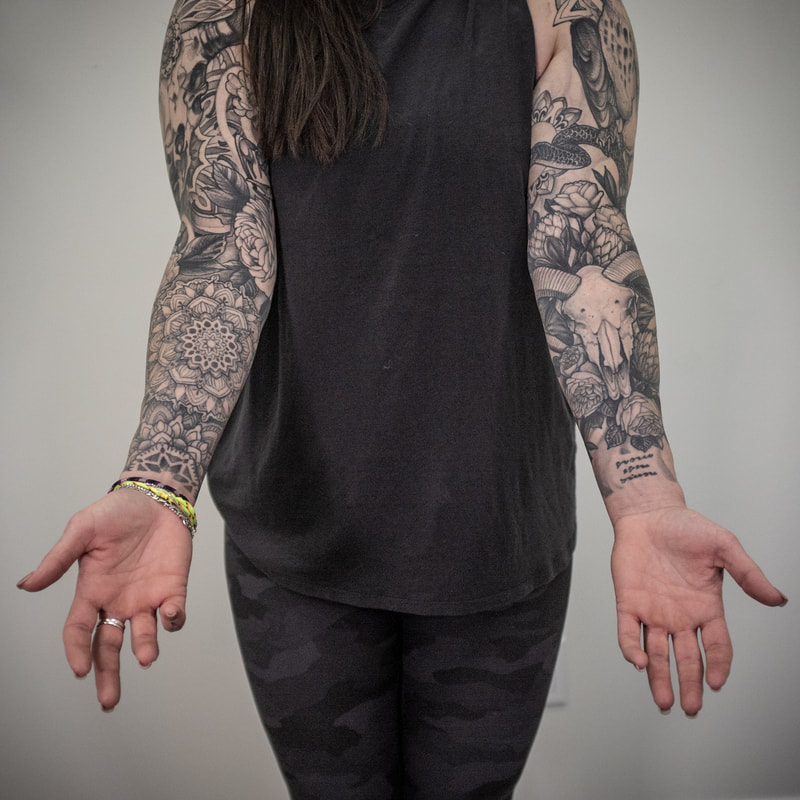



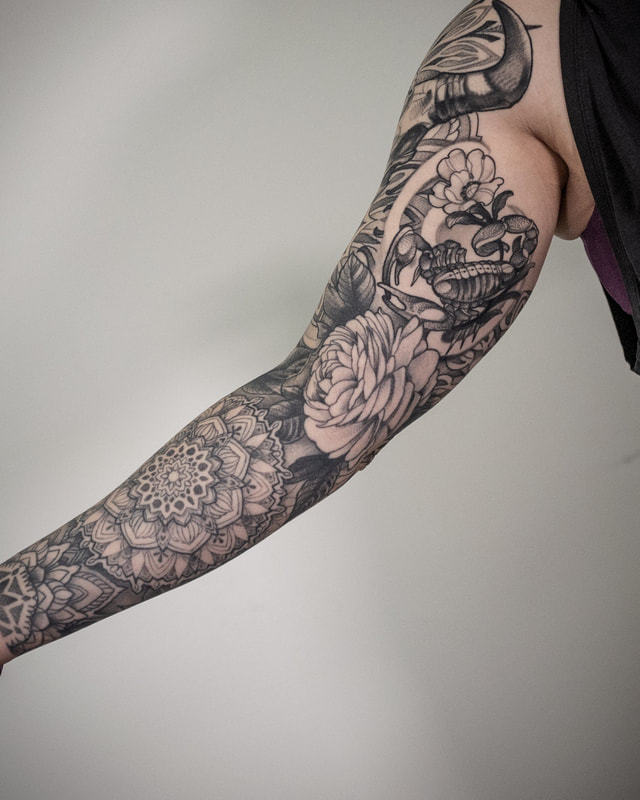






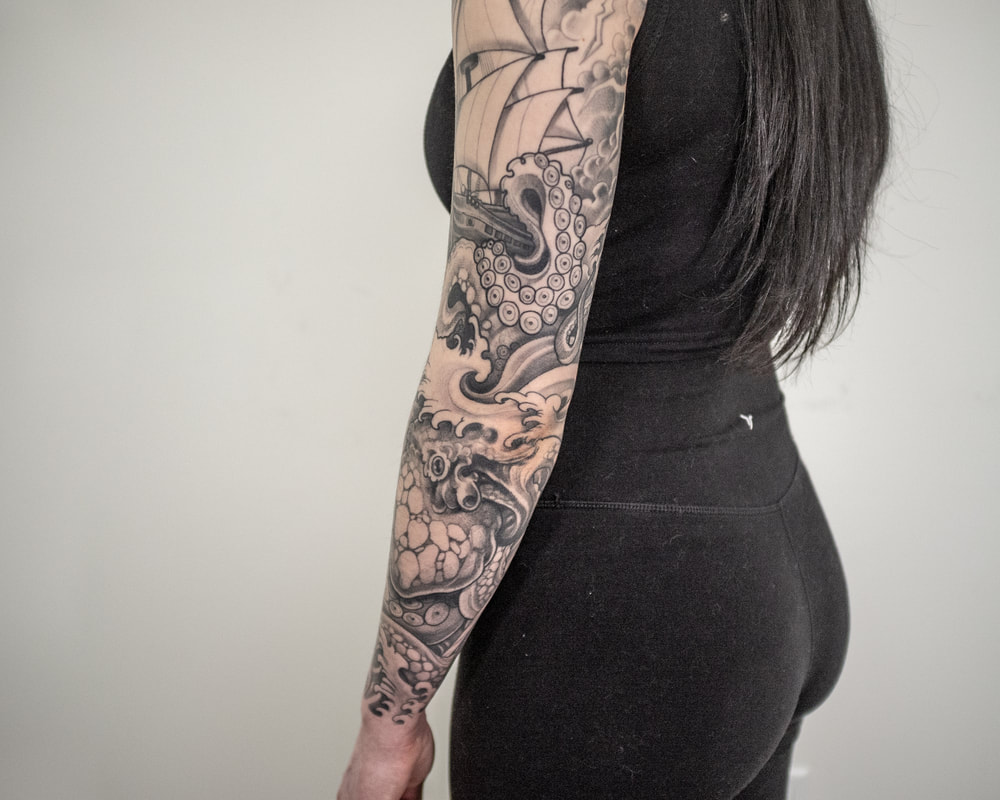


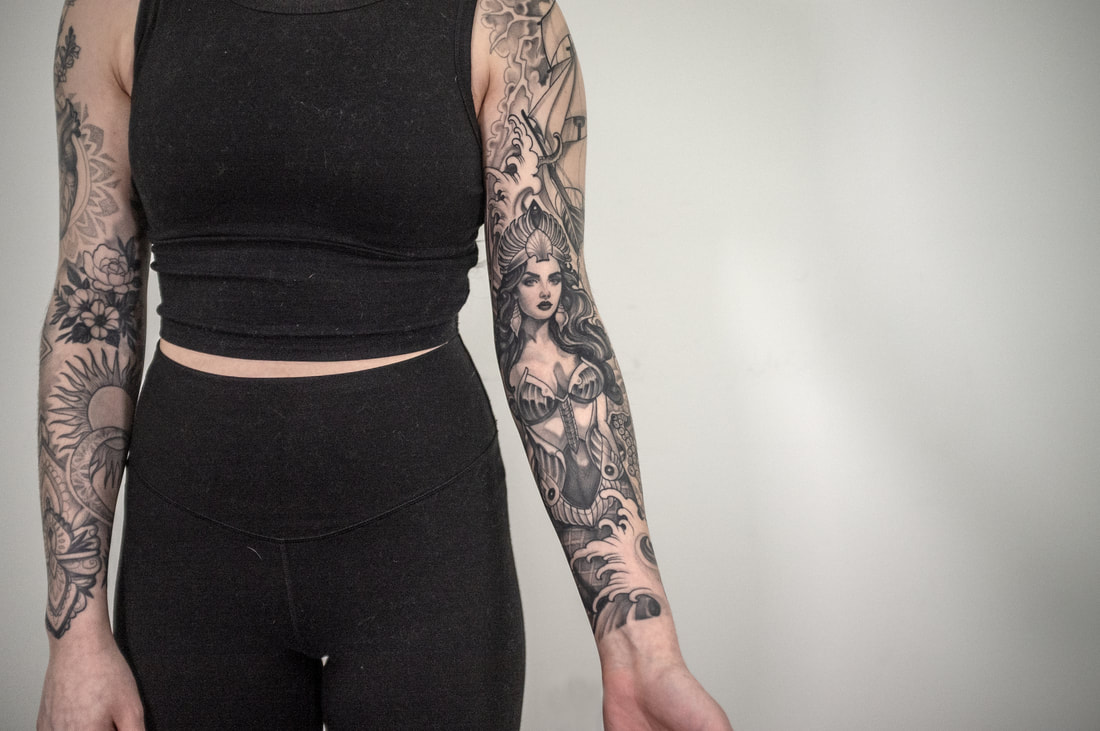


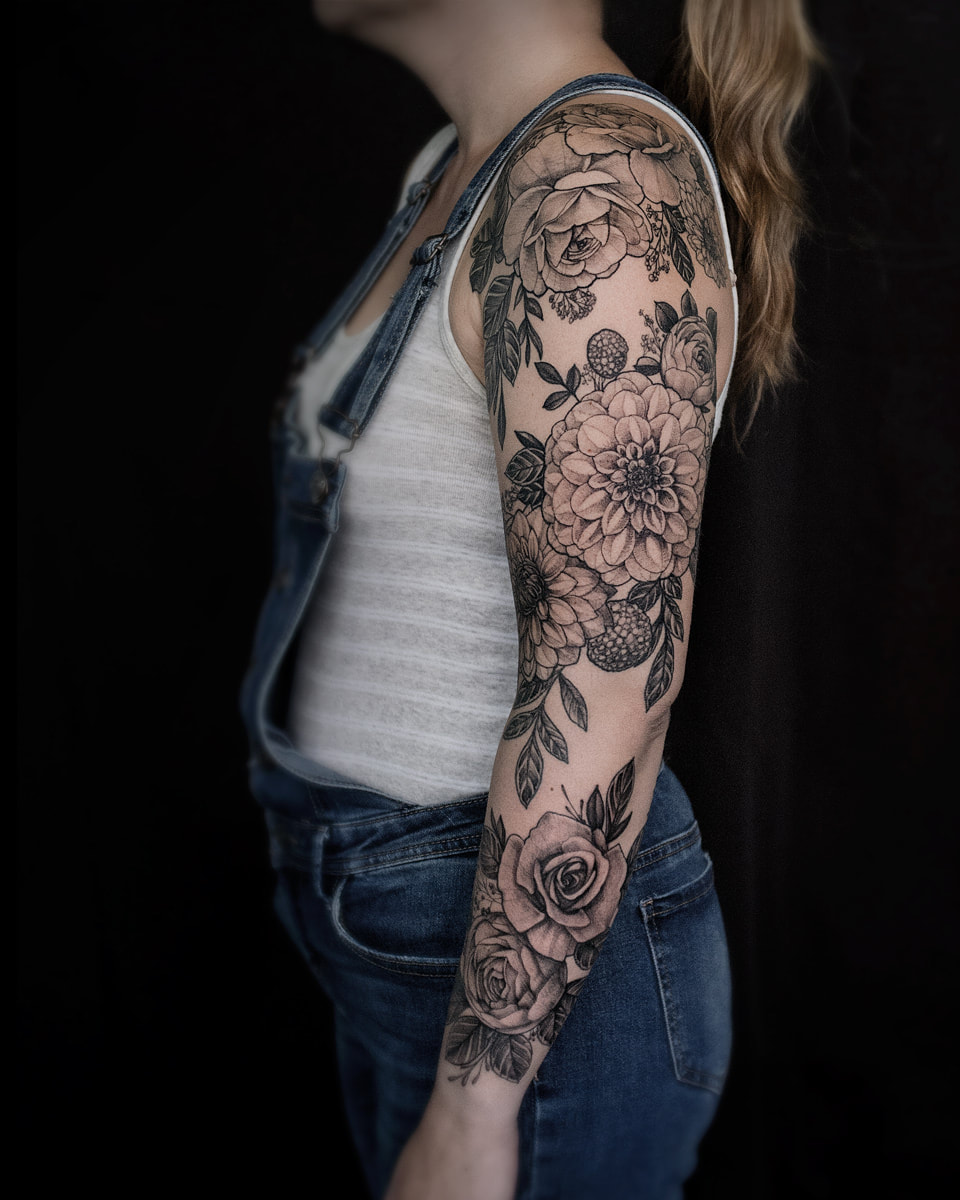













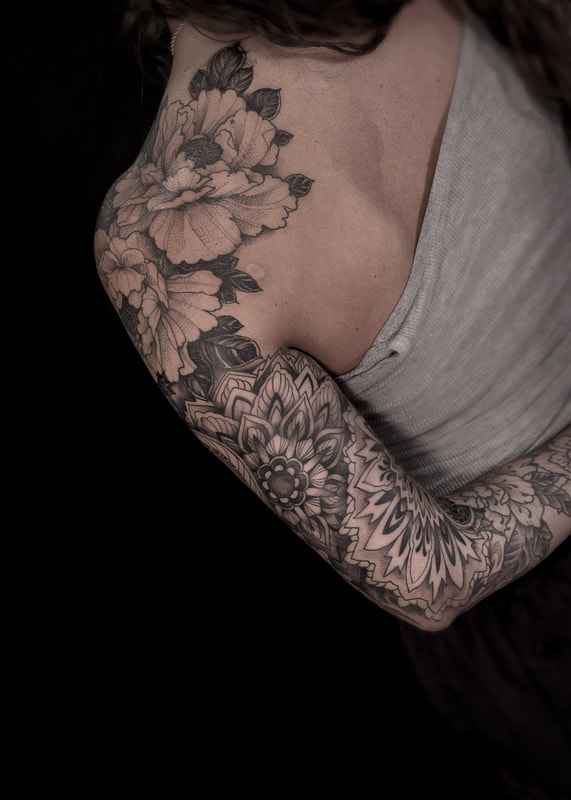



 RSS Feed
RSS Feed
